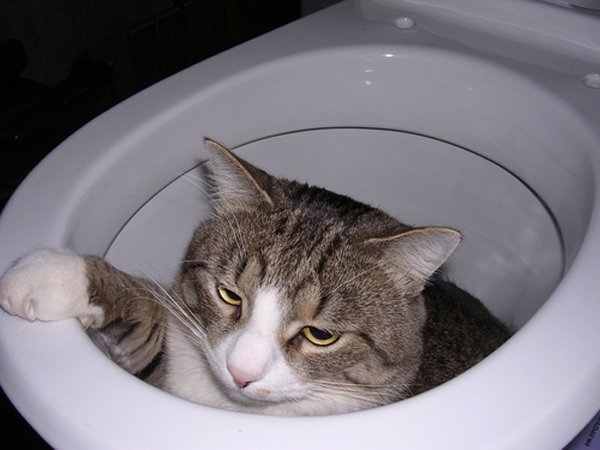Avoid Bathroom Emergencies: Never Flush Cat Poop Down Your Toilet - Expert Guidance
Avoid Bathroom Emergencies: Never Flush Cat Poop Down Your Toilet - Expert Guidance
Blog Article
The article author is making several good pointers on Can You Flush Cat Poop Down The Toilet? overall in this post down the page.

Intro
As feline proprietors, it's necessary to be mindful of exactly how we dispose of our feline close friends' waste. While it may appear hassle-free to purge feline poop down the commode, this practice can have damaging effects for both the setting and human health.
Alternatives to Flushing
Thankfully, there are much safer and a lot more accountable methods to take care of pet cat poop. Consider the following alternatives:
1. Scoop and Dispose in Trash
One of the most typical method of taking care of feline poop is to scoop it right into a naturally degradable bag and toss it in the trash. Make sure to make use of a dedicated trash scoop and dispose of the waste immediately.
2. Usage Biodegradable Litter
Choose biodegradable pet cat trash made from products such as corn or wheat. These clutters are eco-friendly and can be safely thrown away in the garbage.
3. Hide in the Yard
If you have a lawn, consider hiding pet cat waste in an assigned location far from veggie gardens and water resources. Make certain to dig deep sufficient to prevent contamination of groundwater.
4. Set Up a Pet Waste Disposal System
Invest in a pet waste disposal system especially developed for feline waste. These systems make use of enzymes to break down the waste, reducing smell and environmental influence.
Wellness Risks
In addition to environmental concerns, purging cat waste can also posture health and wellness threats to human beings. Pet cat feces might contain Toxoplasma gondii, a bloodsucker that can create toxoplasmosis-- a possibly extreme ailment, particularly for expectant females and people with damaged immune systems.
Environmental Impact
Purging feline poop introduces hazardous virus and bloodsuckers into the water, posturing a considerable risk to water ecosystems. These contaminants can adversely impact marine life and compromise water quality.
Final thought
Liable family pet possession prolongs past giving food and shelter-- it likewise includes proper waste administration. By refraining from purging feline poop down the bathroom and selecting different disposal techniques, we can lessen our environmental impact and protect human health and wellness.
Why Can’t I Flush Cat Poop?
It Spreads a Parasite
Cats are frequently infected with a parasite called toxoplasma gondii. The parasite causes an infection called toxoplasmosis. It is usually harmless to cats. The parasite only uses cat poop as a host for its eggs. Otherwise, the cat’s immune system usually keeps the infection at low enough levels to maintain its own health. But it does not stop the develop of eggs. These eggs are tiny and surprisingly tough. They may survive for a year before they begin to grow. But that’s the problem.
Our wastewater system is not designed to deal with toxoplasmosis eggs. Instead, most eggs will flush from your toilet into sewers and wastewater management plants. After the sewage is treated for many other harmful things in it, it is typically released into local rivers, lakes, or oceans. Here, the toxoplasmosis eggs can find new hosts, including starfish, crabs, otters, and many other wildlife. For many, this is a significant risk to their health. Toxoplasmosis can also end up infecting water sources that are important for agriculture, which means our deer, pigs, and sheep can get infected too.
Is There Risk to Humans?
There can be a risk to human life from flushing cat poop down the toilet. If you do so, the parasites from your cat’s poop can end up in shellfish, game animals, or livestock. If this meat is then served raw or undercooked, the people who eat it can get sick.
In fact, according to the CDC, 40 million people in the United States are infected with toxoplasma gondii. They get it from exposure to infected seafood, or from some kind of cat poop contamination, like drinking from a stream that is contaminated or touching anything that has come into contact with cat poop. That includes just cleaning a cat litter box.
Most people who get infected with these parasites will not develop any symptoms. However, for pregnant women or for those with compromised immune systems, the parasite can cause severe health problems.
How to Handle Cat Poop
The best way to handle cat poop is actually to clean the box more often. The eggs that the parasite sheds will not become active until one to five days after the cat poops. That means that if you clean daily, you’re much less likely to come into direct contact with infectious eggs.
That said, always dispose of cat poop in the garbage and not down the toilet. Wash your hands before and after you clean the litter box, and bring the bag of poop right outside to your garbage bins.
https://trenchlesssolutionsusa.com/why-cant-i-flush-cat-poop/
We were made aware of that write-up on Don’t flush cat feces down the toilet through a friend on a different website. Do you know anybody else who is looking into the subject? Do not hesitate to share it. Thanks for your time. Please check our website back soon.
Call Today Report this page